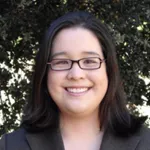
Photo by Tobias Sieben.
Stanford Medicine Scope - July 18th, 2017 - by Krista Conger
I’m not going to lie. I’m not a big amusement park fan. But I’m fascinated by this picture of this amazing artsy walkable roller coaster (called, mysteriously, Tiger and Turtle — Magic Mountain) in Duisburg, Germany. It’s a great illustration of a concept in gene expression called chromosomal looping.
The idea is that DNA looping, to create a structure like the track of this art exhibit, is an efficient way to bring together stretches of DNA that are normally separated by large distances. Often these loops are associated with changes in the expression levels of nearby genes. But much remains to be learned about how the three-dimensional structure of chromosomes affects the function of living cells.
Now Stanford dermatologist Kevin Wang, MD, PhD, and graduate student Stefanie Morgan have devised a way to use the immensely popular gene editing tool called CRISPR/Cas9 to loop together any two DNA segments. Of particular interest are short stretches of DNA that promote the expression of nearby genes and other, more-distant DNA sequences that enhance that expression from afar. They described their technique last week in Nature Communications.
I asked Wang to tell me more about what they’ve accomplished. As he explained in an email:
Looping has long been assumed to play an instructive role in gene expression — turning genes on or off depending on which loops form by juxtaposing various enhancers with their target promoters — but it’s not been clear how this chromosomal looping is regulated. We’ve re-engineered the CRISPR technology to create reversible, targetted loops between any two DNA segments of our choosing. So now we can interrogate any enhancer-promoter relationship at will. This is particularly important to understand how the gain or loss of looping ability that we sometimes see in cancer cells or during the course of normal development affects gene expression in the cell.
The researchers tested the ability of their technique, which they termed CLOuD9, to manipulate chromosomal structure in human leukemia cells growing in lab dishes. These cancer cells express high levels of a gene called fetal gamma-globin in lieu of the beta-globin gene that is usually expressed by their non-cancerous peers. Morgan and Wang found that they could restore the robust expression of beta-globin in the leukemia cells by using CLOuD9 to juxtapose the gene’s promoter with a distant enhancer region. Conversely, they could reverse the expression by releasing the loop.
Looping had already been postulated to be important in the expression of beta-globin. But the ability to induce and then reverse these three-dimensional structures at will is an important advance. As Wang explained:
We have begun to work with research groups around the world to investigate how CLOuD9 can be used to learn more about specific gene regulatory events in biological systems ranging from viral latency in immune cells to drug resistance in cancer.
Like seen in some extreme roller coasters, the researchers are also using the technique to push the limits of looping. Are extremely large loops spanning vast chromosomal distances possible? What about loops within loops, or loops between two separate chromosomes? If so, what are the functional consequences? The implications are… well, dizzying!


